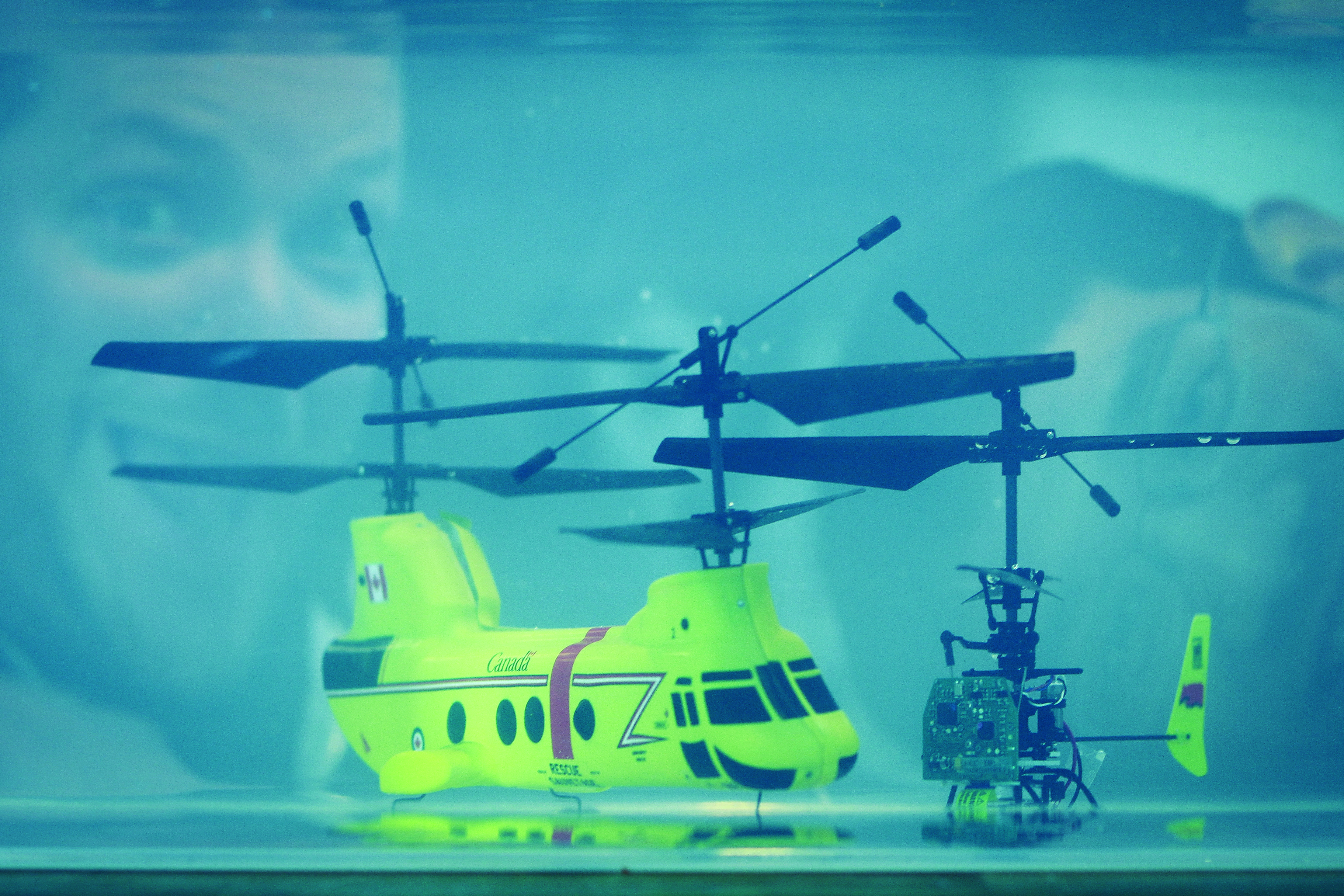Flying over open water is exciting, but a good day of R/C fun can be ruined by even a relatively small puddle. Fortunately, you can protect your electronics investment from a dunk with a few readily available products.
Planning Your Approach
The majority of what we do at Flite Test involves radio-controlled airplanes or multirotors, so the components we want to treat include transmitters, receivers, electronic speed controllers (ESCs), servos, and flight control boards. For most of these, a petroleum-based hydrophobic agent such as CorrosionX applied liberally will be sufficient to protect against incidental exposure to moisture, for example flying in light rain or snow. (Conformal coating, essentially spray enamel, is another option for receivers, but it’s not recommended for ESCs or motors because it will clog the bearings.)
In fact, we submerged a small R/C helicopter coated in CorrosionX in fresh and salt water and were able to fly it out of both! Of course, this is an extreme test and not everyone is planning on dunking his or her electronics in a tub of water. If you do anticipate more extensive or prolonged exposure, that might change how much time and effort you’re going to spend making everything water resistant.
Protecting Critical Systems
For servos, we recommend CorrosionX’s denser HD product; you’ll need to open up the housing and spray inside. The potentiometer (a variable resistor) is the most critical part to waterproof because if water gets inside it will give you false readings. When you’re finished, be sure to clean the outside with isopropyl alcohol or glue won’t stick to it.
For more sensitive electronic components such as ESCs we suggest using heat-shrink tubing and epoxy to create a protective barrier. Note: Hot glue will not work for this because it doesn’t stick to silicone. First remove any manufacturer-applied heat-shrink tubing and replace it with a larger piece. Apply heat as you normally would, then seal the ends with 5-minute epoxy, making sure not to leave any gaps. If you want to make the seal waterproof, instead of just resistant, you can use 24-hour epoxy.
A Note on Motors
If you’re using brushless motors, they are, by their nature, waterproof and will operate while submerged, assuming the wiring is properly insulated. The bearings should be oiled after exposure to water, though.
With a few precautionary measures, you can feel more confident flying over lakes, in inclement weather, or wherever there may be water involved! Just be sure to brush up on your swimming and scuba skills.











